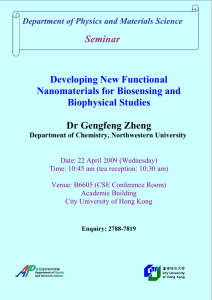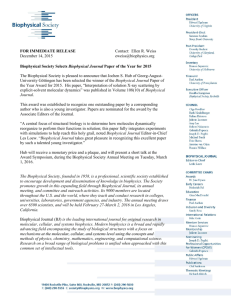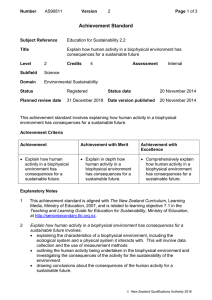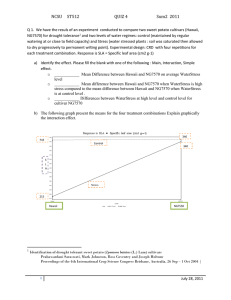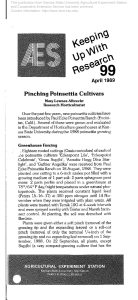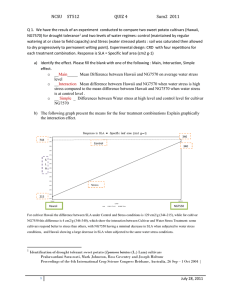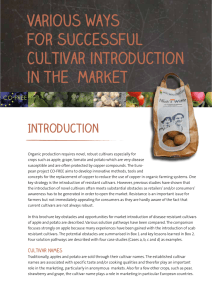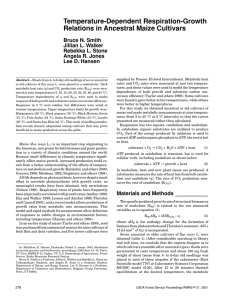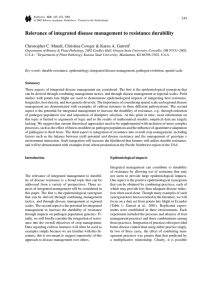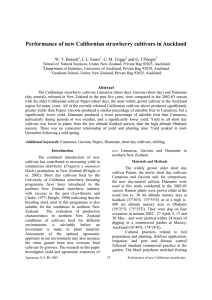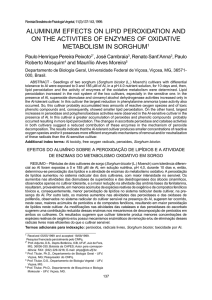Abstract submission form for the 10
advertisement
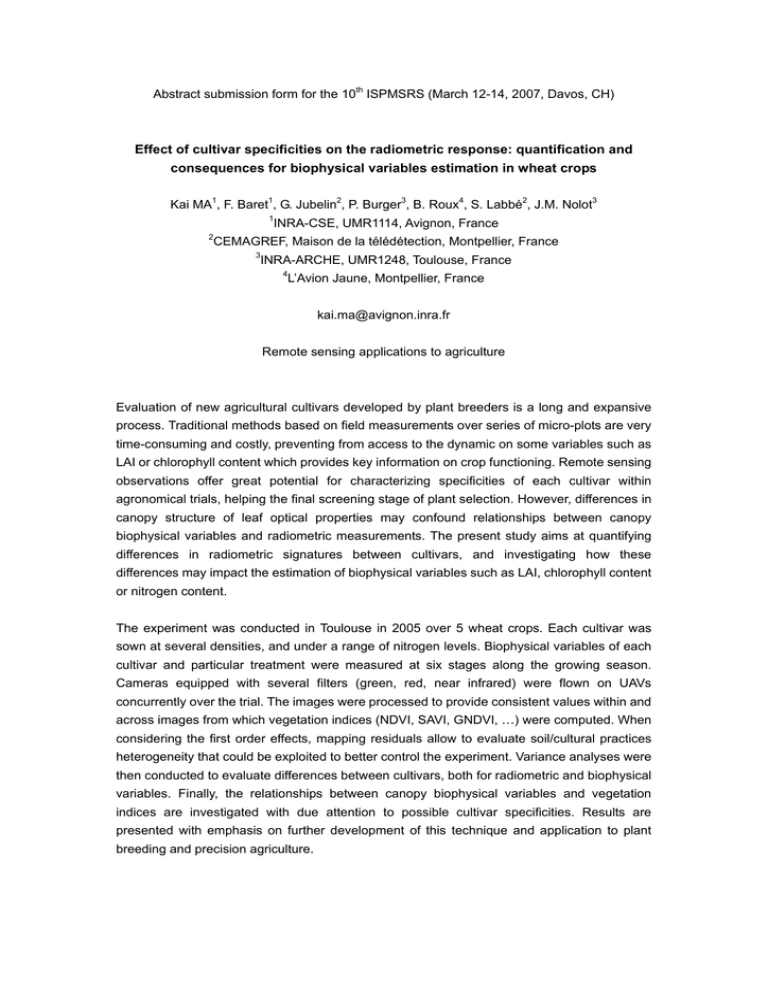
Abstract submission form for the 10th ISPMSRS (March 12-14, 2007, Davos, CH) Effect of cultivar specificities on the radiometric response: quantification and consequences for biophysical variables estimation in wheat crops Kai MA1, F. Baret1, G. Jubelin2, P. Burger3, B. Roux4, S. Labbé2, J.M. Nolot3 1 INRA-CSE, UMR1114, Avignon, France 2 CEMAGREF, Maison de la télédétection, Montpellier, France 3 INRA-ARCHE, UMR1248, Toulouse, France 4 L’Avion Jaune, Montpellier, France kai.ma@avignon.inra.fr Remote sensing applications to agriculture Evaluation of new agricultural cultivars developed by plant breeders is a long and expansive process. Traditional methods based on field measurements over series of micro-plots are very time-consuming and costly, preventing from access to the dynamic on some variables such as LAI or chlorophyll content which provides key information on crop functioning. Remote sensing observations offer great potential for characterizing specificities of each cultivar within agronomical trials, helping the final screening stage of plant selection. However, differences in canopy structure of leaf optical properties may confound relationships between canopy biophysical variables and radiometric measurements. The present study aims at quantifying differences in radiometric signatures between cultivars, and investigating how these differences may impact the estimation of biophysical variables such as LAI, chlorophyll content or nitrogen content. The experiment was conducted in Toulouse in 2005 over 5 wheat crops. Each cultivar was sown at several densities, and under a range of nitrogen levels. Biophysical variables of each cultivar and particular treatment were measured at six stages along the growing season. Cameras equipped with several filters (green, red, near infrared) were flown on UAVs concurrently over the trial. The images were processed to provide consistent values within and across images from which vegetation indices (NDVI, SAVI, GNDVI, …) were computed. When considering the first order effects, mapping residuals allow to evaluate soil/cultural practices heterogeneity that could be exploited to better control the experiment. Variance analyses were then conducted to evaluate differences between cultivars, both for radiometric and biophysical variables. Finally, the relationships between canopy biophysical variables and vegetation indices are investigated with due attention to possible cultivar specificities. Results are presented with emphasis on further development of this technique and application to plant breeding and precision agriculture.
